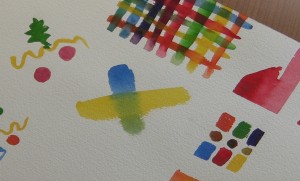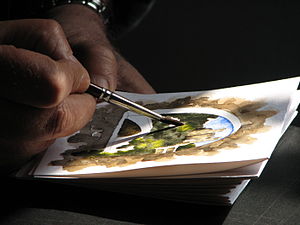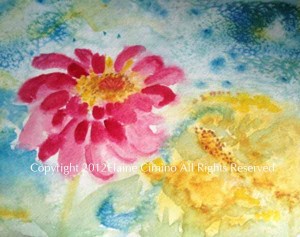May 3, 2014 to May 24, 2014
at Highland Senior Center

Learn Watercolor and expand your creativity! Take art classes and learn skills that will be with you for a life-time. This art class covers color theory and painting techniques in watercolors. You learn about papers and various drawing techniques. Learn the color wheel and elements of color theory.
Beginners welcomed.
If you are experienced or have taken previous classes please bring your art work to class to show me what you would like to work on for this session. We will explore Realism and abstraction and use experimental techniques.
We will explore Wet in wet techniques that includes any application of paint or water to an area of the painting that is already wet with either paint or water. In general, wet in wet is one of the most distinctive features of watercolor painting and the technique that produces a striking painterly effect.
The essential idea is to wet the entire sheet of paper, laid flat, until the surface no longer wicks up water but lets it sit on the surface, then to plunge in with a large brush saturated with paint. This is normally done to define the large areas of the painting with irregularly defined color, which is then sharpened and refined with more controlled painting as the paper (and preceding paint) dries.
Wet in wet actually comprises a variety of specific painting effects, each produced through different procedures. Among the most common and characteristic:
- Backruns (also called blossoms, blooms, oozles, watermarks, backwashes or runbacks). Because the hydrophilic and closely spaced cellulose fibers of the paper provide traction for capillary action, water and wet paint have a strong tendency to migrate from wetter to drier surfaces of the painting.
- Paint Diffusion. This produces a characteristic feathery, delicate border around the color area, which can be enhanced or partially shaped by tilting the paper surface before the water dries, shaping the diffusion with surface water flow.
- Pouring Color. Some artists pour large quantities of slightly diluted paint onto separate areas of the painting surface, then by using a brush, spray bottle of water and/or judicious tilting of the painting support, cause the wet areas to gently merge and mix. (The technique was actually invented, and used for similar effect, by J.M.W. Turner.)
- Dropping In Color. In this technique a color area is first precisely defined with diluted paint or clear water, then more concentrated paint is dropped into it by touching the wet area with a brush charged with paint.
- Salt Texture. Grains of coarse salt, sprinkled into moist paint, produce small, snowflake like imperfections in the color.
- Cling-film technique. The use of kitchen cling-film to create special effects in watercolor painting. A wash of watercolor is applied to paper and cling-film is laid over the wet pigment.

Artist using watercolor
Dry Brush techniquesthat include Scrumbling
Color Mixing we will explore minimal palettes and split palettes of warm and cool relationships.
A good link to read up on these techniques http://en.wikipedia.org/wiki/Watercolor_painting
Where: Highland Senior Center
Times: 10 am – 12 pm
Days: Saturday (4 classes)
Dates: May 3th -24th, 2014
Cost: $65.00 (under $20 per class)
Other: Materials List available Online
Register: Online registration Payment can be made online on the Elaine’s Website through Paypal that accepts credit cards or by check at the Senior Center Front Desk made Payable to Elaine Cimino Studios, LLC or the first day of class. Please register online so we know your intention to take the class.








